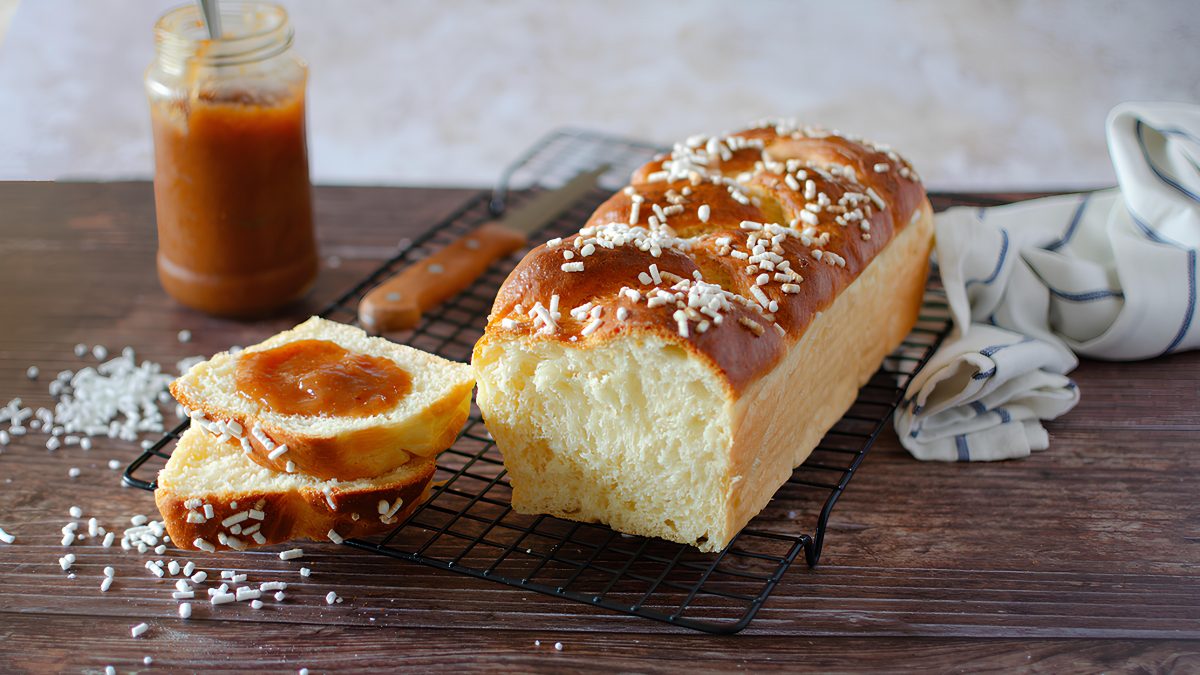
No-Knead Brioche is a very simple recipe that everyone can make, which allows you to obtain a soft and tasty leavened sweet. It is a high and well-honeycombed brioche, a type of no-knead-bread that does not require any type of processing: the ingredients, in fact, are mixed together with a simple fork, then left to rise for a fairly long time, which ensures a result as soft as a cloud.
To make it, you will have to dissolve the brewer's yeast in warm water and let it rest for 5 minutes, then add the melted butter, beaten eggs, vanilla extract and sugar; finally, incorporate flour and salt. The dough is placed in a warm and dry place until it doubles its initial volume, then divided into three portions, braided and placed in a plumcake mold, lined with baking paper, for further rest.
All you have to do is brush the surface with a drop of milk and sprinkle it with granulated sugar, then bake for just over half an hour: you will thus obtain a golden and fragrant loaf, with an almost impalpable consistency, perfect for breakfast, to start the day with a boost of energy, or for a genuine snack. Excellent natural, it is truly irresistible cut into slices and spread with butter, honey, chocolate creams, jams or preserves of all kinds.
What is No-Knead Brioche Loaf?
No-knead brioche, a simplified version of the classic French bread, has gained popularity in the United States as part of a broader movement towards accessible home baking. Traditionally, brioche requires extensive kneading to incorporate its rich ingredients like butter and eggs. However, the no-knead method, which relies on time and hydration to develop gluten, has made it easier for home bakers to achieve similar results without intensive labor. This approach aligns with the American trend of simplifying complex recipes for everyday cooks. By adopting the no-knead technique, bakers can enjoy the luxurious texture and flavor of brioche with less effort, making it a beloved choice in U.S. kitchens.
Pro Tips for The Best No-Knead Brioche Loaf
- Make sure your eggs, butter, and milk are at room temperature before mixing. This helps them combine more smoothly and promotes even fermentation, resulting in a better rise and texture.
- Since this is a no-knead recipe, time is your best friend. Letting the dough rise slowly—preferably overnight in the refrigerator—will enhance the flavor and texture. A long, cold fermentation strengthens the gluten network naturally.
- Even without kneading, it’s important to ensure all the ingredients are well incorporated. Use a spatula or wooden spoon to mix until there are no visible streaks of flour or lumps of butter.
- Brioche is a rich dough that can stick easily. Grease your baking pan thoroughly with vegan butter or a neutral oil to ensure easy release and maintain the loaf’s shape.
- Bake at a consistent temperature and avoid opening the oven door frequently. A slow, even bake ensures the inside cooks fully while the outside achieves a deep golden color.
- Let the brioche cool completely on a wire rack before slicing. This allows the crumb to set and prevents it from becoming gummy or collapsing.
Why Is My Brioche Loaf So Tough and Dense?
Insufficient rising time can prevent the dough from developing a light texture, while using too much flour or the wrong type can make it heavy.
Cold ingredients, especially butter and eggs, may hinder proper fermentation, and underbaking or overbaking affects the crumb and crust. Additionally, not using enough fat or liquid can result in a dry, dense loaf.
Can I Add Anything Else to The Dough?
Popular additions include chocolate chips, raisins, dried cranberries, or orange zest for a sweet twist. For a savory variation, you might incorporate herbs, olives, or cheese. Just fold in these extras gently after the dough has risen to avoid deflating it too much.
What Can I Use This No-Knead Brioche Loaf For?
Its rich, slightly sweet flavor makes it perfect for breakfast items like French toast, bread pudding, or simply toasted with jam.
You can also use it to make gourmet sandwiches, burgers, or sliders, thanks to its soft yet sturdy crumb. For dessert, try it as the base for cinnamon rolls or stuffed sweet buns. Its adaptability makes it a fantastic staple for both sweet and savory creations.
Can I Make This Ahead of Time?
Yes, you can definitely make no-knead brioche ahead of time. In fact, the dough benefits from a long, slow rise in the refrigerator, which you can do overnight or up to 24 hours. This not only enhances the flavor but also makes it more convenient to bake fresh in the morning or when needed.
Does It Freeze Well?
Yes, no-knead brioche freezes very well! Once it’s completely cooled, you can wrap the loaf or individual slices tightly in plastic wrap and then place them in a freezer-safe bag or container. It will keep for up to 2 months. To enjoy, simply thaw at room temperature or gently warm in the oven for that freshly-baked texture and taste.
How to Store No-Knead Brioche Loaf
To store your no-knead brioche loaf, let it cool completely first. Then, wrap it in plastic wrap or store it in an airtight container at room temperature for up to 2–3 days. For longer freshness, you can refrigerate it for up to a week, though this may slightly dry out the crumb.
Ingredients
How to Make No-Knead Brioche Loaf
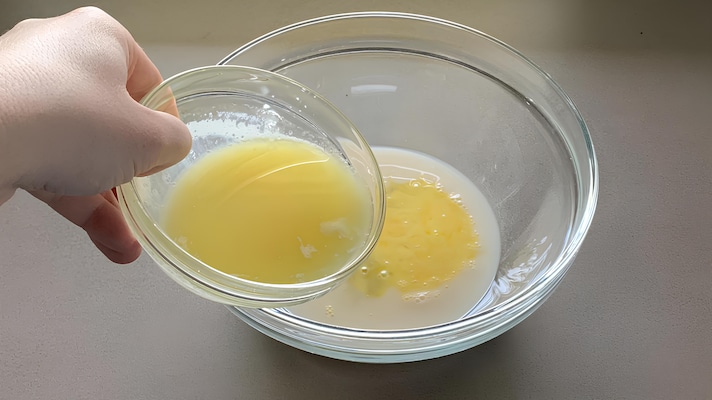
Melt the butter in a bain-marie or in the microwave. Mix the brewer's yeast in the warm water and let it rest for 5 minutes, then add the warm melted butter.
Melt the butter in a bain-marie or in the microwave. Mix the brewer's yeast in the warm water and let it rest for 5 minutes, then add the warm melted butter.
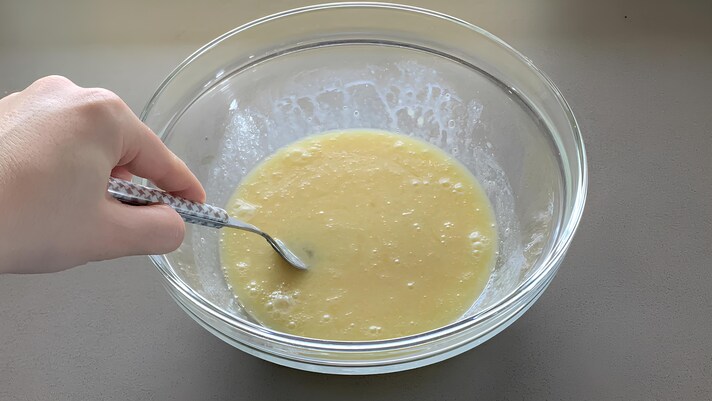
Mix with a fork, then add the eggs, lightly beaten, the sugar and the vanilla extract.
Mix with a fork, then add the eggs, lightly beaten, the sugar and the vanilla extract.
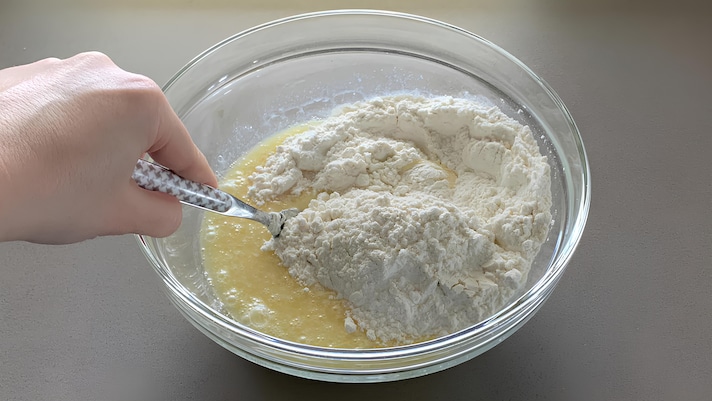
Add the salt and sifted flour, continuing to mix all the ingredients with a fork.
Add the salt and sifted flour, continuing to mix all the ingredients with a fork.
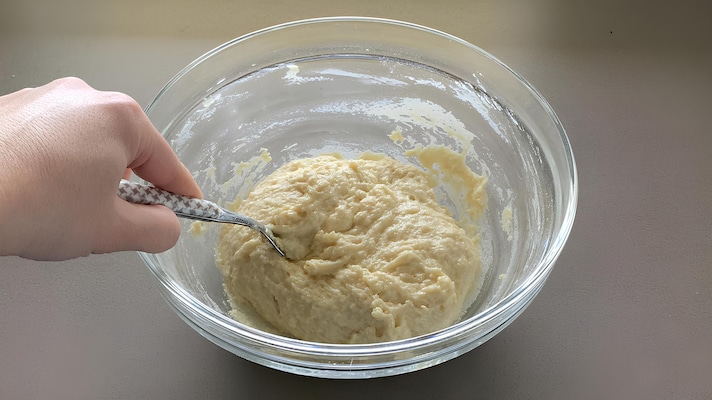
Knead until the flour is completely absorbed, obtaining a smooth mixture.
Knead until the flour is completely absorbed, obtaining a smooth mixture.
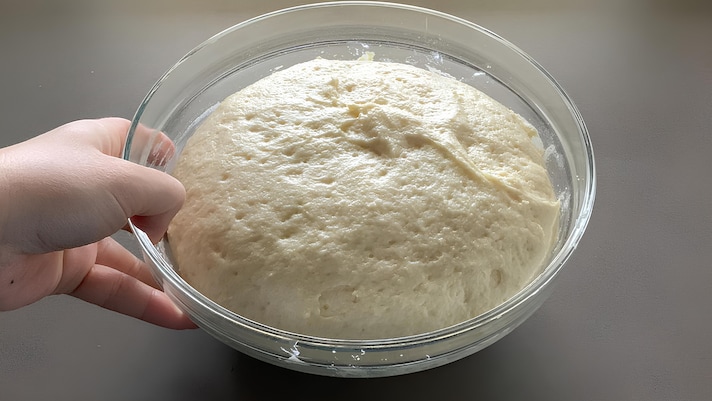
Cover it with a cloth or a sheet of cling film and let it rise in a warm and dry place, until it doubles in size: it will take about 4-5 hours. The time may increase or decrease depending on the outside temperature.
Cover it with a cloth or a sheet of cling film and let it rise in a warm and dry place, until it doubles in size: it will take about 4-5 hours. The time may increase or decrease depending on the outside temperature.
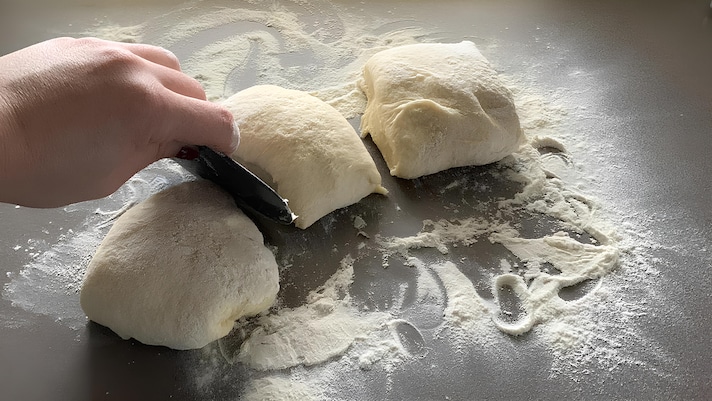
At this point, transfer the dough onto a floured surface and divide it into 3 pieces of equal size.
At this point, transfer the dough onto a floured surface and divide it into 3 pieces of equal size.
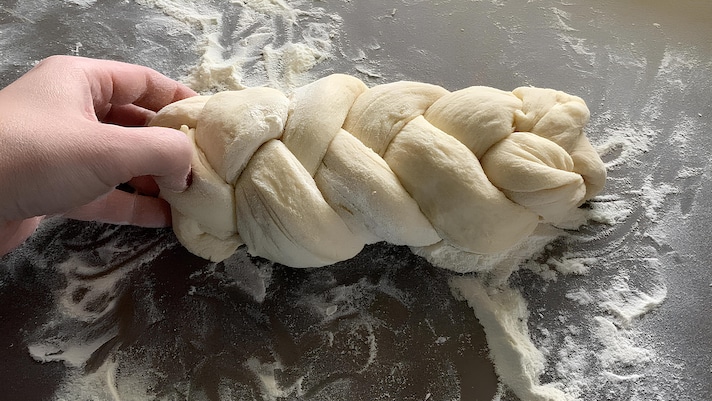
Shape the dough into little loaves and shape them into a braid.
Shape the dough into little loaves and shape them into a braid.
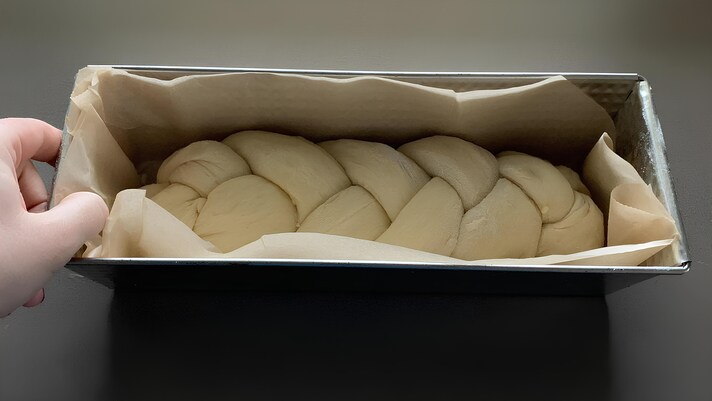
Place it in a plumcake mould, lined with a sheet of baking paper, cover with a tea towel and leave to rise for about 2 hours.
Place it in a plumcake mould, lined with a sheet of baking paper, cover with a tea towel and leave to rise for about 2 hours.
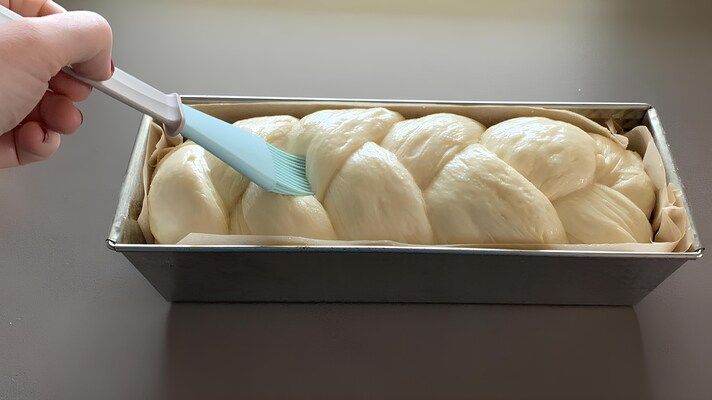
When the braid has reached the edge of the mold, brush the surface with a drop of milk.
When the braid has reached the edge of the mold, brush the surface with a drop of milk.
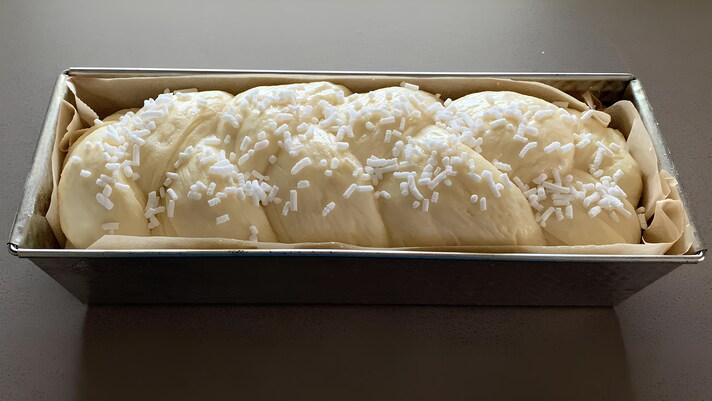
Sprinkle the sugar granules and bake the brioche without kneading at 360°F/180°C for 35 minutes, in static mode. Once ready, take it out of the oven and let it cool completely before removing it from the mold.
Sprinkle the sugar granules and bake the brioche without kneading at 360°F/180°C for 35 minutes, in static mode. Once ready, take it out of the oven and let it cool completely before removing it from the mold.

Enjoy!
Enjoy!
;Resize,width=767;)
